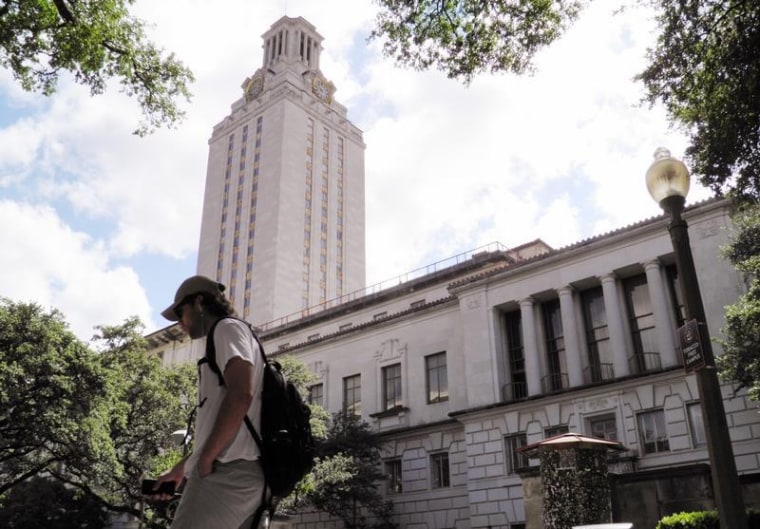As of midnight on Monday, some college students in Texas could be carrying more than just textbooks into classrooms and lecture halls — some could be packing handguns. A new state law went into effect that allows students with concealed carry licenses to bring their guns onto most college campuses.
The state’s controversial “campus carry” law allows students who are at least 21 years old and who have a concealed handgun license to carry their guns at all public colleges and universities. Some college facilities, including sports arenas and chemical labs, are off-limits for concealed gun holders. And private schools and two-year community colleges are excluded until next year, when the law takes effect at those schools.

With a recent uptick in mass shootings, a number of which have happened on college campuses, proponents of the law say that an armed student body might be able to prevent such incidents, while critics fear the new measures might encourage more violence.
The Texas law took effect on the 50th anniversary of the clock tower massacre, in which a student gunman shot 49 people, killing 16, at the University of Texas at Austin. The shooter, Charles Whitman, a Marine-trained 25-year-old engineering student, climbed to the 28th-floor observation deck of a campus clock tower and began firing on students and staff. The massacre is one of the deadliest mass shootings in American history.
Texas is one of just eight states that allows students to carry guns into college buildings, including those on the sprawling University of Texas system, which includes nearly 215,000 students. An earlier Texas law signed in 1995 allowed students with concealed carry licenses to carry weapons on campus sidewalks, streets and parking lots.
Officials at the University of Texas say the new law will likely only include a small number of students, given that students must be of a certain age. The university estimates that less than 1 percent of its students fit the criteria, according to reports.
The University of Texas unsuccessfully lobbied against the law, which was pushed through by Republican Gov. Gregg Abbott and a majority in the Republican-led state Legislature. The law does offer some power to university presidents to regulate concealed carry on their campuses, but that power is limited. By the letter of the law any rules or regulations instituted by the university may not “generally prohibit” license holders to carry their concealed firearms on campus.
The same day the law takes effect, a memorial will be dedicated to the victims of the University of Texas clock tower shootings. The killing, on Aug. 1, 1966, was in many ways the creaking open of an unending chapter in American gun violence in the form of mass shootings.
“It was kind of an introduction to the concept that a person will do this and he doesn’t give a damn about whether he’ll live or die,” Gary Lavergne, the author of a book on the shooting, told The Guardian. “We weren’t used to that. People who committed crimes, you assume they wanted to get away. Well, not this guy. He went up there and he knew he wasn’t coming down alive.”
In the decades since, mass shootings in America have become routine. And some of the most deadly have occurred on college campuses. In 2007, a student at Virginia Tech University killed 33 people and injured 23 others. The next year, a former student of Northern Illinois University walked into a classroom at the school, killing six people and wounding 21 more before taking his own life. The drumbeat played on over the years, including the murder of 10 and injuring of 9 at Umpqua Community College in Roseburg, Oregon. In between and after there were others, with gunmen killing and maiming in clips of two, three or more.
Supporters of the new law say that students with guns could prevent some of the carnage inflicted by someone bent on killing on campuses. They say that no law would stop someone from simply walking onto campus with a gun. But for others the idea of young people, given the mental health issues and stress some people among the college demographic face, with weapons tucked under their coats is a dangerous proposition.
“Guns do not have a place on campus,” John "Artly" Fox, a student who survived the 1966 University of Texas shooting, told Reuters. “A university is a battleground of words and ideas, and not of weapons."
